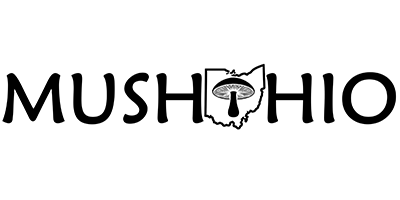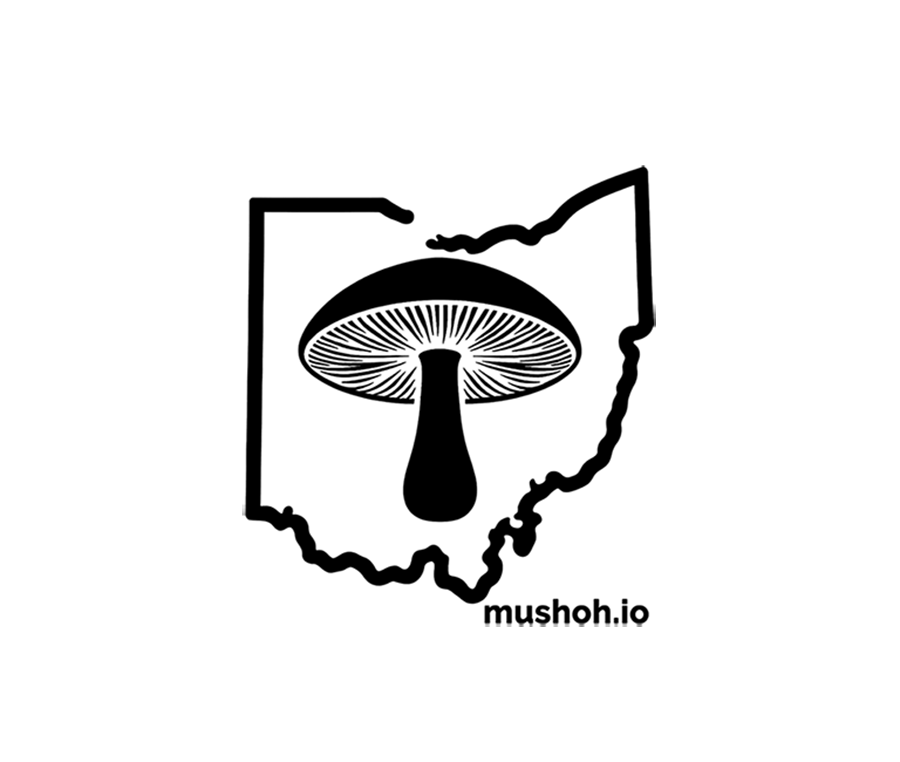Welcome back to your springtime mushroom adventure with Mush Ohio!
In Part 2, we showcased exciting gourmet mushrooms like Black Pearl King, Lion's Mane, and Chestnut mushrooms, and highlighted the importance of starting with top-quality grain spawn from Mush Ohio. Now, it's time to roll up your sleeves and get that mycelium into the garden! This guide will walk you through preparing your outdoor space and inoculating your mushroom bed for a successful spring harvest of your chosen varieties right here in Ohio.
Setting the Stage: Preparing Your Spring Garden for Gourmet Mushrooms
As Ohio sheds its winter coat and the soil begins to warm, conditions become just right for introducing your chosen gourmet mushroom species to your garden. Success starts with choosing the right spot and preparing your materials thoughtfully, keeping in mind that varieties like Black Pearl King, Lion's Mane, and Chestnut mushrooms generally appreciate similar conditions when grown on bulk substrates like sawdust or straw.
Site Selection – Prime Real Estate for Your Mushrooms:
- Shade is Key: Most cultivated gourmet mushrooms, including Black Pearl King, Lion's Mane, and Chestnut, prefer dappled shade. Think under deciduous trees, on the north side of a building, or under a shade cloth. Avoid harsh, direct sunlight which can dry out the substrate.
- Wind Protection: A spot sheltered from strong, drying winds will help maintain the necessary humidity.
- Moisture Retention & Drainage: The area should hold moisture well but not become waterlogged. Good drainage is important to prevent anaerobic conditions.
- Easy Access: You'll need to get to your patch for inoculation, watering, monitoring, and harvesting!
Preparing Your Bulk Substrate – Food for Your Fungi:
Gourmet mushrooms like Black Pearl King, Lion's Mane, and Chestnut are typically wood-decomposers, thriving on lignocellulosic materials (plant-based fibrous materials like wood, straw, and grasses). For outdoor beds or blocks started with grain spawn, consider these:
-
Popular Choices for Ohio Gardeners:
- Hardwood Sawdust/Chips: This is an excellent choice for Lion's Mane and Chestnut mushrooms, and also works wonderfully for Black Pearl King. Use deciduous hardwoods like oak, maple, or beech. Ensure it's from untreated wood. Aged chips or sawdust can sometimes be better.
-
Straw: Wheat, oat, or rye straw is a great option, especially for Black Pearl King, and can be used for some other oyster varieties too. Chop it into
1-2 inchpieces to give the mycelium more access points. - Note: Always refer to the Mush Ohio product page for your specific mushroom spawn for any particular substrate recommendations.

-
Substrate Preparation (Pasteurization): Pasteurization is crucial to reduce competitor organisms, giving your chosen Mush Ohio mycelium a strong advantage.
-
Hot Water Pasteurization (Recommended for most outdoor projects): Submerge your chopped straw or hardwood sawdust/small chips in hot water – ideally
65-82°C(150-180°F) – for1-2 hours. Drain it thoroughly until it reaches "field capacity" (a squeezed handful yields only a drop or two of water). -
Cold Water Lime Bath (Alternative for straw): Soak straw in cold water with hydrated lime for
12-24 hoursto raise the pH and inhibit molds. Handle hydrated lime with care. Drain well.
-
Hot Water Pasteurization (Recommended for most outdoor projects): Submerge your chopped straw or hardwood sawdust/small chips in hot water – ideally
-
A Note on Supplements: For beginners cultivating outdoors, Mush Ohio generally recommends sticking with unsupplemented pasteurized substrate to minimize contamination risks. Gypsum (
2-5%dry weight) can be a beneficial low-risk addition to improve structure. Some advanced methods for species like King Trumpet might involve supplementation, but master the basics first!
The "Lasagna" Method: Building Your Mushroom Bed (Great for many species!)
A simple and effective way to create your outdoor mushroom patch for species like Black Pearl King or even to try with Lion's Mane or Chestnut spawn on a sawdust/chip mix:
- Clear Your Spot & Optional Cardboard Base: Prepare your chosen shaded area. Laying down plain brown cardboard can help with weeds and moisture.
-
Layer Substrate and Spawn:
- Start with a layer of your pasteurized, cooled, and drained bulk substrate (
2-4 inchesthick). - Crumble your chosen Mush Ohio grain spawn (Black Pearl King, Lion's Mane, Chestnut, etc.) over this layer. Aim for a spawn rate of about
10-20%spawn to wet substrate weight. - Add another layer of substrate, then another layer of spawn. Repeat 2-4 times, ending with a layer of substrate.
- Start with a layer of your pasteurized, cooled, and drained bulk substrate (
- Optional Casing Layer: A top layer of low-nutrient, moisture-retentive material (coco coir, peat moss with lime) is highly recommended for outdoor beds to protect the colonizing substrate and maintain humidity for pinning.
This method can be adapted for dedicated beds or integrated into mulched areas (using hardwood chips, especially if growing Lion's Mane or Chestnut).

Inoculation Day! Bringing Your Mushroom Bed to Life
With your substrate prepared and cooled, and your Mush Ohio grain spawn ready, it's time for the exciting part!
Springtime Inoculation Tips for Ohio:
- Watch the Frost: Ensure all danger of hard frost has passed.
-
Substrate Temps: Aim for substrate temperatures to be consistently above
10°C(50°F). Ideal colonization ranges are often15-25°C(60-77°F).
The Process:
- Work Cleanly: Use clean hands or gloves when handling spawn.
- Break Up Spawn: Gently crumble the colonized grain spawn before distributing it.
- Layer or Mix: Follow the "Lasagna Method" or thoroughly mix spawn with substrate in a clean container before filling your bed/blocks.
Maintaining Conditions During Colonization:
- Moisture is Key: Keep the bed consistently moist but not waterlogged. Cover loosely with more straw, burlap, or horticultural fleece.
- Temperature: Protect from extreme temperature swings if possible. Spring weather is often ideal.
- Patience & Monitoring: After 1-2 weeks (or longer for some species/larger projects), you should see white mycelial growth spreading from your Mush Ohio spawn. Full colonization can take several weeks to a few months.
- Specific Needs: For example, Lion's Mane mycelium can be more delicate or wispy than robust Pleurotus mycelium; this is normal.
Protecting Your Precious Patch:
- Pest Patrol: Slugs, snails, and pill bugs might be attracted. Use organic methods.
- Weather Wise: Ensure good drainage for heavy spring rains.
Coming Up Next...
You've done the groundwork, and your chosen gourmet mycelium is starting to work its magic! In Part 4, the final installment of our Mush Ohio Guide, we’ll cover the thrill of seeing those first mushroom pins (for Black Pearl King, Lion's Mane, Chestnut, and others!), how and when to harvest your delicious mushrooms, post-harvest care, and troubleshooting. Get ready for the rewarding finale!
Need to stock up on grain spawn for Black Pearl King, Lion's Mane, Chestnut, or other gourmet varieties? Visit Mush Ohio today!

About The Author

Amy Beacom serves as our resident scientist and gardening aficionado, receiving a B.S. Biochemistry from Kent State University following undergraduate study and research at St Vincent University.

